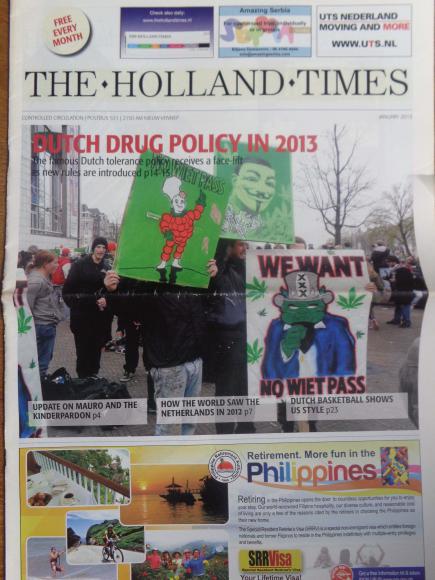- Nederlands
- English
January 2013: ARTS & CULTURE: The Dutch Golden Age exhibition in Amsterdam

The Dutch Golden Age exhibition in Amsterdam Many common aspects of modern life have their roots in the Dutch Golden Age of the 17th century. BENJAMIN ROBERTS looks at the new exhibition in the Amsterdam Museum dedicated to explaining these links. The recently opened exhibition in the Amsterdam Museum commemorates two phenomena that sprouted from the Dutch Golden Age. One is 150 years since the abolition of slavery in the Dutch colonies. Zandvliet remarks “slavery is a dark page in the history of the Dutch Golden Age that many people like to overlook that’s why we are addressing it in this exhibition”. The other is marks the 400th anniversary of the canal belt. In the year 1613 construction began for the city’s main grid that included digging the Herengracht, Keizersgracht, and Prinsengracht. During the same period, the city’s economic and social infrastructures were also established which is still recognizable in today’s society. Zandvliets argues, “there is a similarity with the elaborate grid work of canals that were built and Holland’s extensive economic and social infrastructure that was established over the globe. In the Dutch Republic, the tulips were exported all over the world. The Netherlands is still the largest exporter of flowers in the world. The only difference is that many of the flowers today are grown in Kenya and are exported through the same distribution network from four hundred years ago. The new infrastructures that were established during Dutch Golden Age, including the tulip trade, helped create the modern world, as we know it today. Zandvliet enthusiastically exclaims, “the seventeenth century was the gateway to our world in more ways than we can imagine. Our modern notions about equality between men and women, social equality between the classes, provisions for underprivileged, child-rearing practices, and youth culture were established in that period, and that’s what the exhibition is all about”. Money The exhibition begins with the most important infrastructures in the seventeenth century, symbolically displayed with a chest full of silver. Amsterdam’s economic affluence and extensive trade networks spanning from the Baltic States in the North, Japan in the East, and North America in the West would have never happened if Amsterdam did not establish the Exchange Bank on the Dam Square, which became the foundation a reliable, financial infrastructure where tradesmen did not have to physically exchange currency for each transaction. Despite the fact that London took over that role in the eighteenth century, the city still fulfills an important international financial position today. Amsterdam is the center of numerous international and domestic banks and financial institutions. Guns One of the trades that prospered from the established financial infrastructure was the trade in weapons. The exhibition includes the stately portrait of Louis de Geer (1587-1652), who traded in weapons extensively throughout Europe during the bloodiest wars in early modern history, the Thirty Years War (1618-1648). That war devastated the German states economically, demographically, and socially. The Dutch Republic was the largest exporter in weapons during the seventeenth century, despite it’s own ongoing war for independence with Spain, and trade with the enemy. According to a 2010 report, the Netherlands ranks tenth in the world in exporting of weapons. The difference is that contemporaries in the seventeenth century did not regard dealing in weapons as immoral. It was just good business. Information One of the most interesting objects in the exhibition is a chest full of letters from the seventeenth century that was found on board a ship. The letters were dispersed via ships around the globe represent Amsterdam’s pivotal position as a center of information. Zandvliet explains, “For the simple fact, on board of each ship that carried goods to all the trade destinations in the world, also included letters, drawings, prints, newspapers and books about the latest ideas in philosophy, religion, medicine, science, and economics”. Amsterdam was the center of publishing in Europe, and books that could not be published elsewhere due to censorship, could easily be printed in here. “When you think about it, the parallels with the how information is dispersed nowadays via Internet are uncanny”. Amsterdam Museum: “The Dutch Golden Age; Gateway to Our Modern World” until Aug. 31, 2013. Visit: www.amsterdammuseum.nl